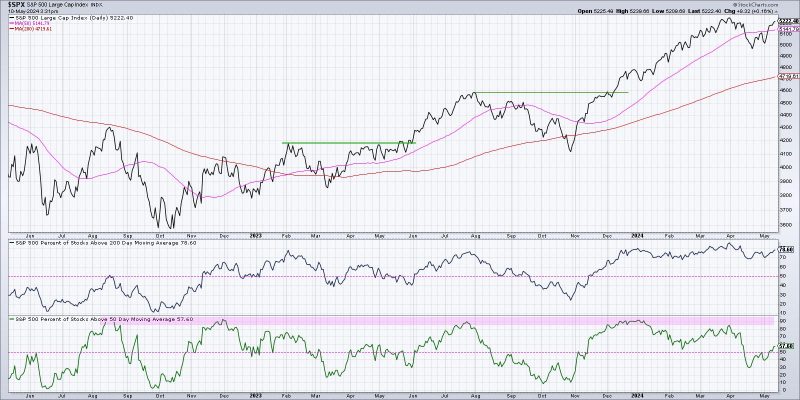Breadth indicators are valuable tools in analyzing market trends and movements. These indicators provide insights into the overall health of the market by examining the participation of various components, such as stocks, sectors, or volume, in the price movement. In this article, we will delve into three key breadth indicators that can be used to confirm a bullish market trend:
1. Advance-Decline Line (A/D Line):
The Advance-Decline Line is a breadth indicator that tracks the number of advancing stocks versus declining stocks in a given market index. It provides a broader view of market performance by measuring the overall strength of the market trend. In a bullish market trend, the A/D Line would show consistent upward movement, indicating that a higher number of stocks are advancing compared to declining. This suggests a healthy market breadth where the majority of stocks are participating in the upward trend.
Traders and investors can use the A/D Line to confirm the strength of a bullish market trend. If the A/D Line is trending higher alongside the price of the index, it provides confirmation that the market rally is supported by broad-based participation among stocks. However, a divergence between the A/D Line and the index price could signal underlying weakness in the market trend, potentially leading to a reversal or correction.
2. New Highs-New Lows Index:
The New Highs-New Lows Index is another breadth indicator that measures the number of stocks hitting new 52-week highs versus new 52-week lows. This indicator helps assess the internal strength of a market trend by identifying stocks that are leading the rally or showing weakness. In a bullish market trend, the New Highs-New Lows Index would show a higher number of stocks hitting new highs compared to new lows, indicating strong market breadth and positive momentum.
By tracking the New Highs-New Lows Index, investors can identify potential opportunities or risks in the market. A broad participation of stocks hitting new highs suggests a healthy uptrend with widespread bullish sentiment. Conversely, a decline in the number of new highs and an increase in new lows may indicate weakening breadth and a potential reversal in the market trend.
3. Volume Confirmation:
Volume confirmation is a crucial aspect of analyzing market trends and validating price movements. In a bullish market trend, rising prices should ideally be accompanied by increasing trading volume. Higher volume indicates strong investor participation and conviction in the upward momentum, providing confirmation of a sustainable trend.
Traders and analysts can use volume analysis to confirm the strength of a bullish market trend. If the volume is trending higher as prices move up, it suggests robust buying interest and validates the bullish bias. On the other hand, declining volume amid rising prices may signal a lack of conviction among market participants, raising concerns about the sustainability of the uptrend.
In conclusion, breadth indicators play a pivotal role in confirming and validating bullish market trends. By monitoring indicators such as the Advance-Decline Line, New Highs-New Lows Index, and volume confirmation, traders and investors can gain insights into the overall health of the market and make informed decisions. These breadth indicators provide a comprehensive view of market participation, helping market participants navigate through dynamic market conditions and identify potential trading opportunities.

